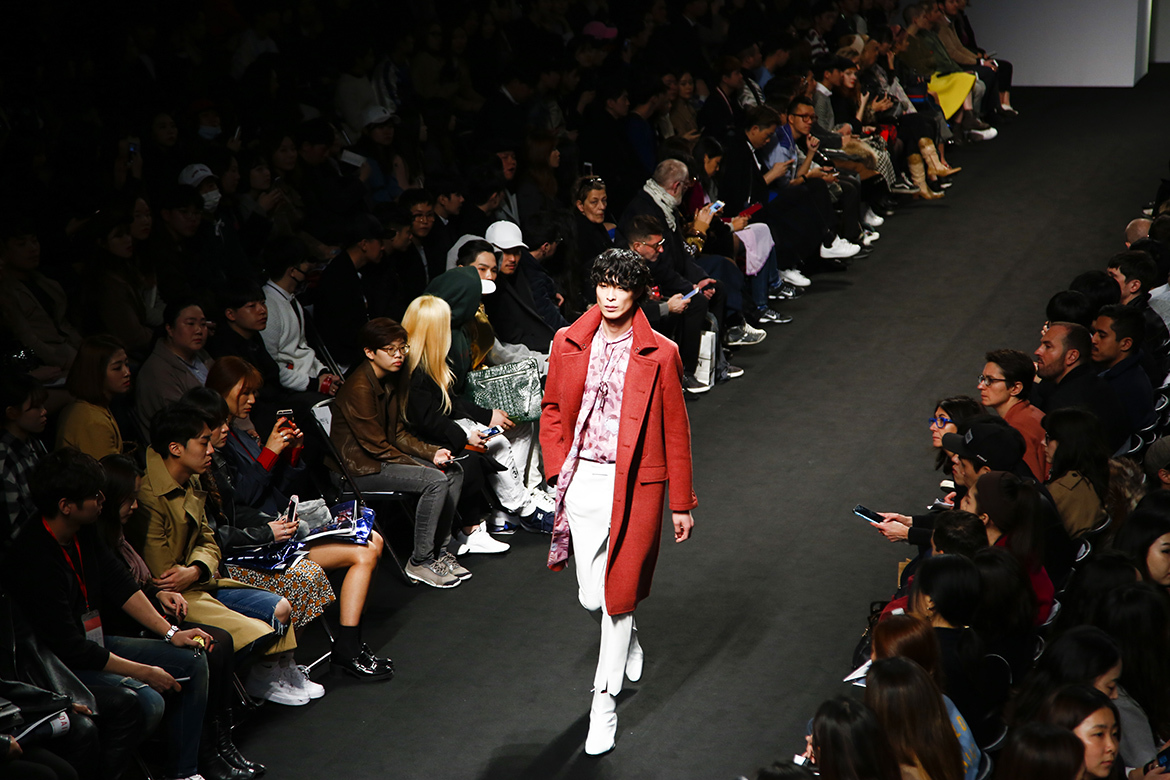On a visit to the Wooyoungmi Manmade concept store in Seoul’s chic Gangnam area last week, the brand’s COO Caroline Kim commented on the shopping destination’s name. “For a long time, men in Korea didn’t have much space to themselves. Women took up all the space,” she said, explaining how Madame Woo — the grande dame behind Wooyoungmi — has always sought to give Korean men their own space. Driving around the country’s capital for Seoul Fashion Week, you are constantly met with beauty banners, cosmetic clinics, and of course the fashion advertising that serves as a reminder of South Korea’s dedication to its fashion industry. It’s the second season in a row that Seoul Fashion Week has invited international press and buyers to see its impressive showcase, and this time a lot of things started to click. Peacocking is a big thing in Seoul right now — not in the snug-suit-and-ankle-sock way of the Pitti Immagine fair in Florence, but, refreshingly, courtesy of the city’s young men, who dress up like New Romantics and hang out outside the show venues looking impossibly cool. On our visit last season they were a revelation — this time, their presence acted as a link to understanding why Korean fashion is having the important moment it’s having.
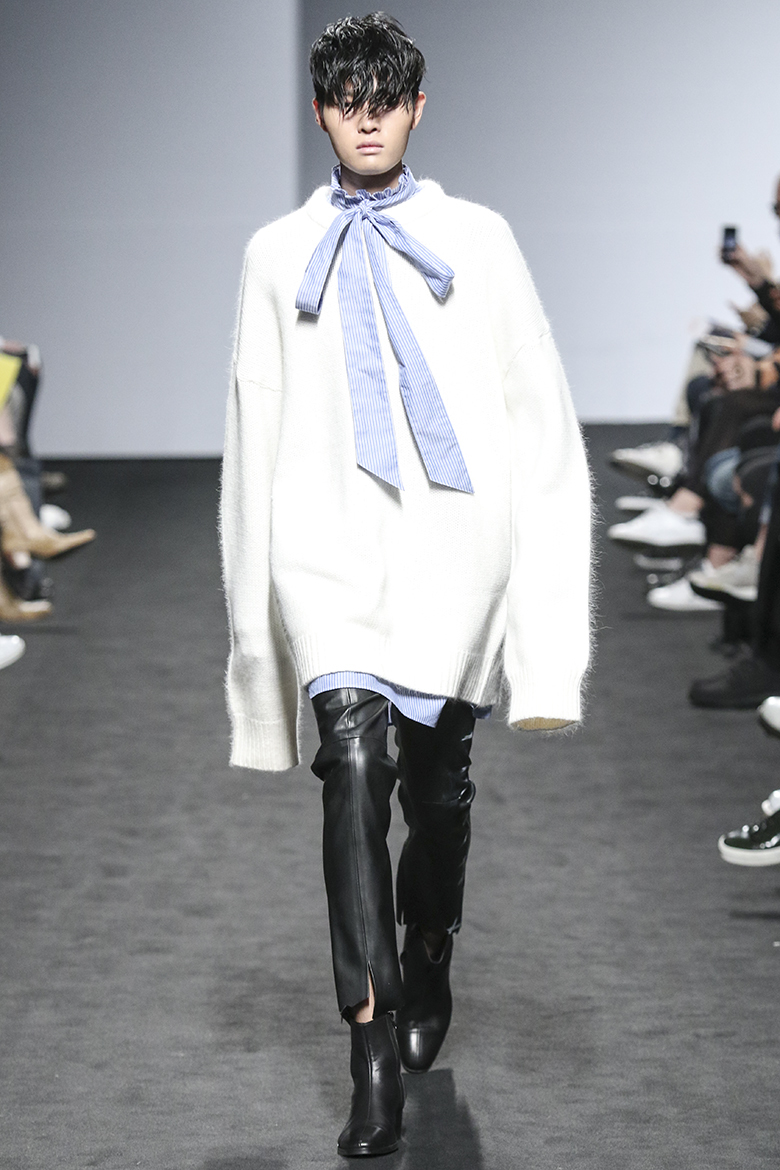
In a Korean fashion culture historically dominated by women, men’s fashion is currently being given the space men never had and undergoing a kind of enlightenment that makes for strong directional expression. It’s the reason brands such as Wooyoungmi and Juun.J have made it big internationally, and the reason the newer brand Blindness — which is mainly menswear-focused — was undoubtedly the best show of the week for the second season running. Korean menswear is intelligent and irreverent because its objective to serve as more than just clothes is so palpable. It’s making a difference, definitely locally. Over the past year, we’ve talked about a menswear revolution in Milan especially, where Alessandro Michele has waved his gender-fluid wand at Gucci and inspired an entire industry. In Seoul, this wave is felt even stronger. So what makes a brand like Blindness so good? The simple answer: identity. Travel around the global fashion weeks (i.e. outside the four big ones) and you’ll soon understand the issue of derivation. It exists at Seoul Fashion Week as well where a few designers probably looked a little bit too much to Vetements this season (although the same could be said for Milan), but that makes it just the more thrilling when you see something quite content to be its own.
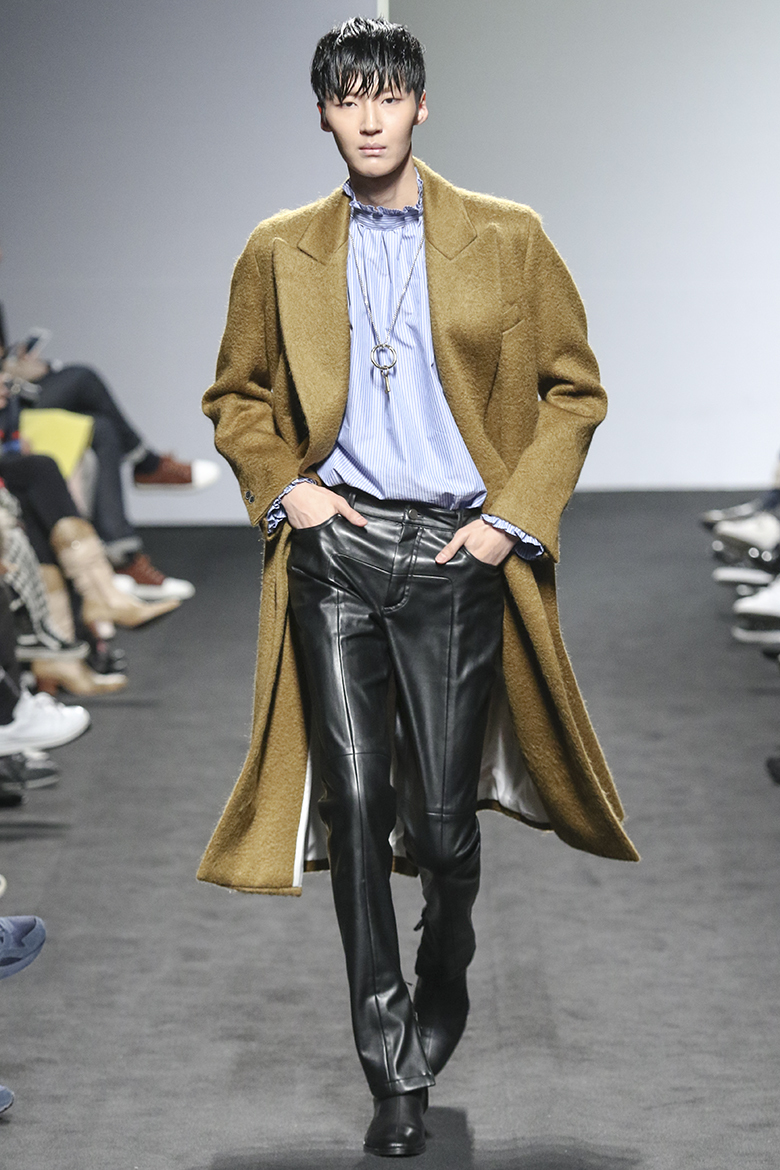
Pristine but ragged-edged skinny leather trousers styled with high-ish heel boots and a super oversize knit with an equally oversize pussy-bow shirt underneath? They are components innate to Gucci, Cavalli, and Saint Laurent, but at Blindness designer Kyu-Yong Shin played with proportions and cuts to make them look anything but old. There was something at once avant-garde and very easy — in the best possible way — about the collection that made you wonder how it would fare on a more international platform. A guess: splendidly. Seoul, however, isn’t resting on its thriving menswear laurels. This season saw a decided improvement on the womenswear front where R.Shemiste is at the top of the game.
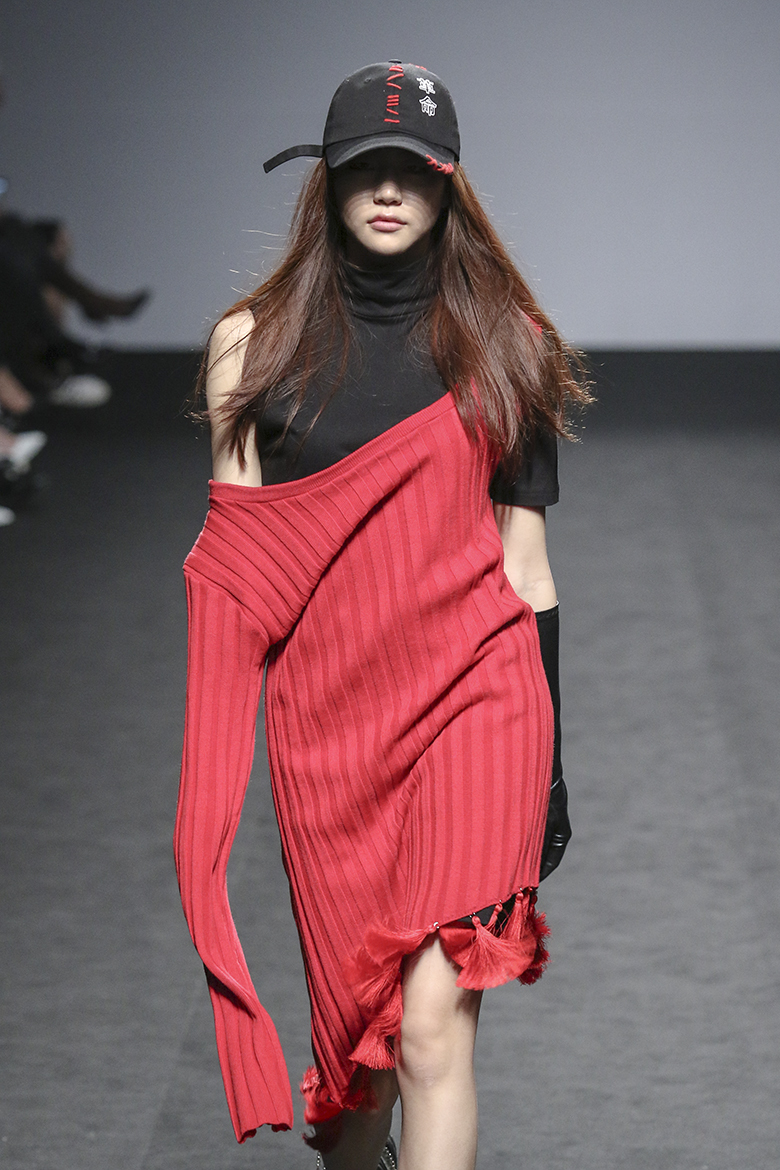
Designers Ji-Yuen Won and Joo-Ho Lee’s clever fusion of grunge, goth, and sportswear through an opulent lens drew on fashion’s current obsession with transforming low into high and making hybrids of unlikely couples. “It’s the Marques’Almeida of Seoul,” one Londoner said, and it was a compliment. R.Shemiste is doing its own thing and it’s working. Ask the models of Seoul what’s the most popular brand and they’ll tell you it’s Pushbutton, which drew the crowd to prove it, including K-Pop stars Kyung-Ah Song, Dong-Hui Lee, and Hyomin. With all its color and volume and sex appeal, the show couldn’t help but remind you of the role K-Pop plays in Korean fashion and the attention it creates around it. (Every time a K-Pop star arrives at the Zaha Hadid-designed Dongdaemun Design Plaza where the shows take place, an avalanche of squealing fans ensues.)
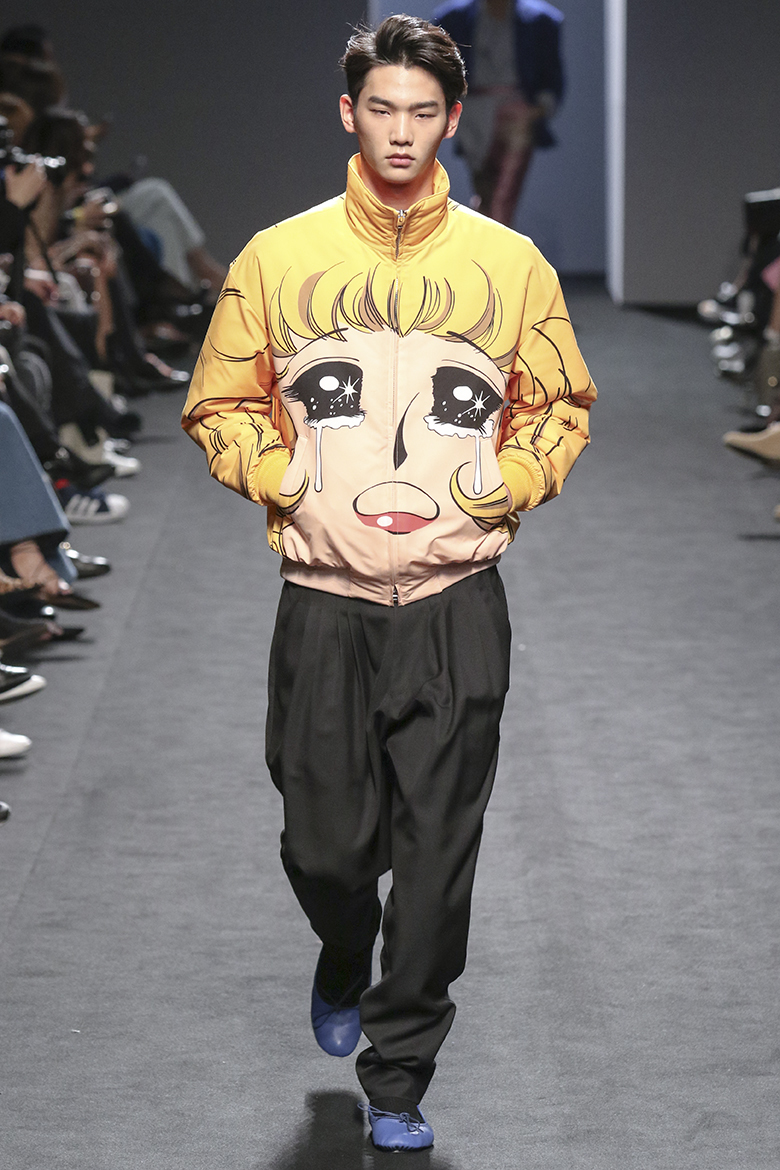
In a country built on technology where Samsung and LG are like royal families, K-Pop is the second most important export for Korea and creates a natural link between technology and fashion. Every single show is attended by one or more K-Pop stars, as will definitely be the case with every sports event when Korea hosts the Winter Olympics in 2018. A TV teaser for the $10-billion undertaking finished with the words, “We told you we could do it, and we will.” It might as well have been the slogan for the country’s fashion industry where no effort or cost is too great in the race to becoming one of the biggest players in international fashion. Next to Blindness and R.Shemiste, labels such as Fleamadonna, Andy & Debb, and the local super brand SJYP could easily make the transition to an international platform, but for Korea it doesn’t seem to be a matter of its designers either showing here or there, but rather a question of both. In a time when Seoul is surely starting to register with a broad international audience as a Far Eastern epicenter of culture and development, it’s about bringing the rest of the world to Seoul by sending the very best parts of Seoul’s fashion and music scenes to the rest of the world.
In just a season, Seoul Fashion Week showed how willing it is to become the best. It may have the advantage of fortune, but the best investment Korea can make in its fashion industry right now is by supporting the very strongest of its young talent, and by continuing its international exposure. One area they certainly already master is the modeling industry. Between Sup Park (aka HyeongSeop, from Elite London), JJ (aka Jeon June, from Storm London), and Jin Park (from Wilhelmina London) there wasn’t a dry eye runway-side amongst international fashion editors all week.
Credits
Text Anders Christian Madsen
